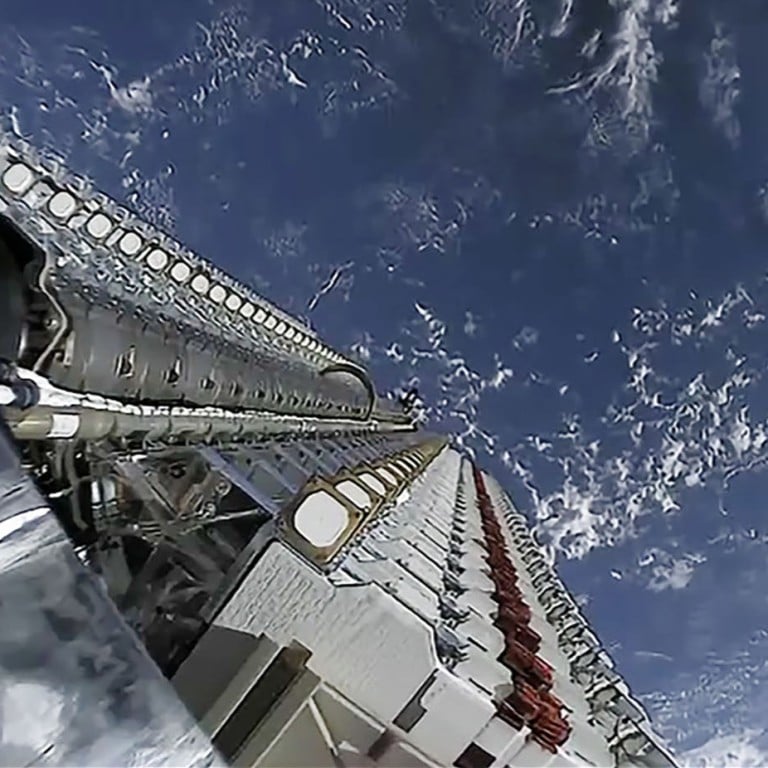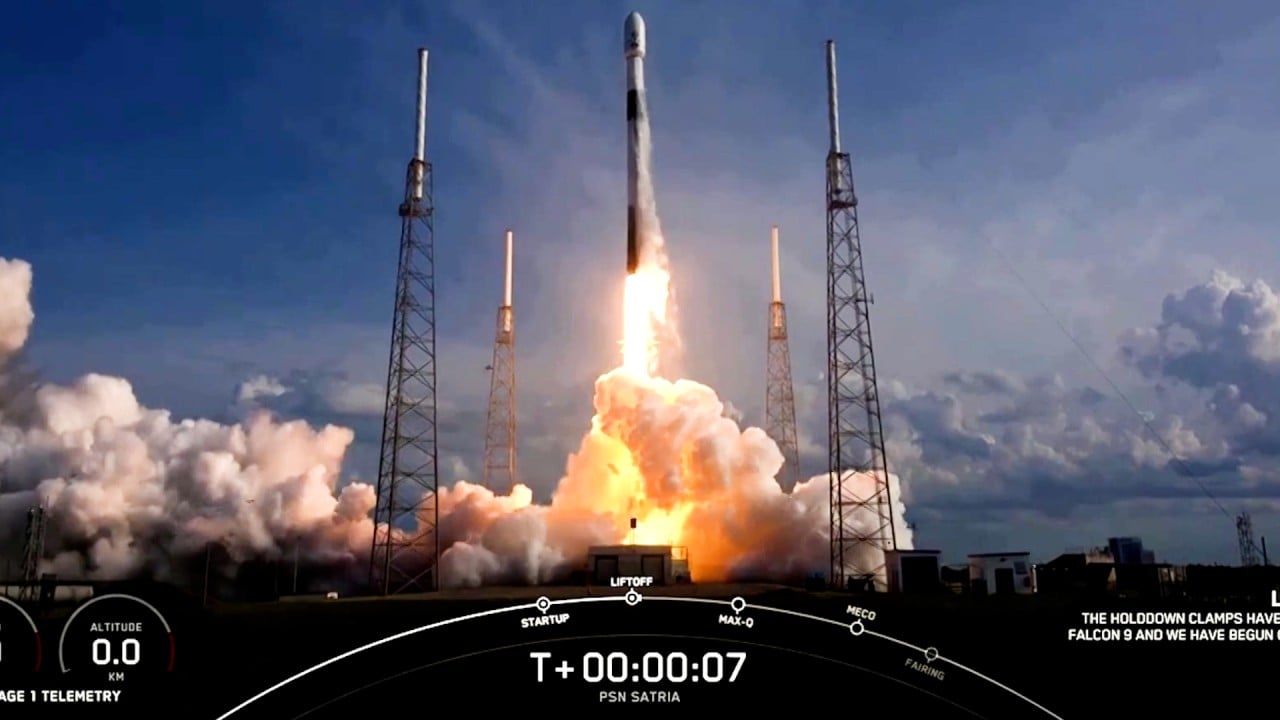
China’s PLA accuses US of ‘militarising space’ with Elon Musk’s Starshield satellite network
- PLA Daily warns that deal between US military and new SpaceX unit poses huge security challenges for ‘other countries’
- Starshield to reportedly put hundreds of satellites in low-Earth orbit to ‘quickly spot potential targets almost anywhere on the globe’
The Starshield unit of the US entrepreneur’s space business is reportedly developing a constellation of hundreds of low-Earth orbit satellites that would allow the US government and military to “quickly spot potential targets almost anywhere on the globe”.
According to Reuters, Starshield and the National Reconnaissance Office, a Washington intelligence agency that manages spy satellites, signed a classified US$1.8 billion contract in 2021.
In the Ukraine and Gaza wars, advanced satellite internet and communication have provided military advantages, opening up a new arena for US-China tech rivalry.
How Chinese scientists made satellite calls on smartphones possible
The planned Starshield network “has not only upgraded its secure communication capabilities” from the Starlink satellite internet system, “but further expanded its Earth observation and payload capabilities”, the commentary said.
Satellites in low-Earth orbit – altitudes of 2,000km (1,200 miles) or less – provide better signals with shorter delays. Payloads such as transponders, imaging sensors, and space environmental monitors, can be attached to those satellites.
The programme to engage Starshield for such military purposes also “posed huge challenges to information and space asset security to other countries”, the commentary said.
“In recent regional military conflicts, the United States has relied on its space military capabilities to intervene in other countries by providing information support through ‘non-combatant means’,” it said.
“This type of action has brought great challenges to maintaining regional peace and stability.”
SpaceX has been providing its civilian-focused Starlink satellite internet service to Ukraine since the early stages of the war. Since June 2023, the cost has been covered by Washington.
In February, Starlink was also given a licence to operate in Israel and parts of the Gaza Strip.
US says China is boosting Russia’s war machine in Ukraine
China is also vying to put satellites in very low-Earth orbit – altitudes under 300km – which costs less and can offer higher resolution images. But because such devices are closer to Earth, more satellites are needed to cover a specific area, making the network more complex.
It is tasked with overseeing the military’s space force and coordinating the uses of emerging civilian innovations for future “intelligence warfare”.


